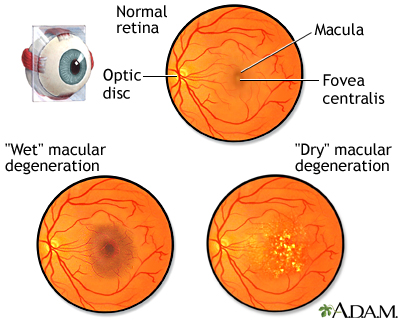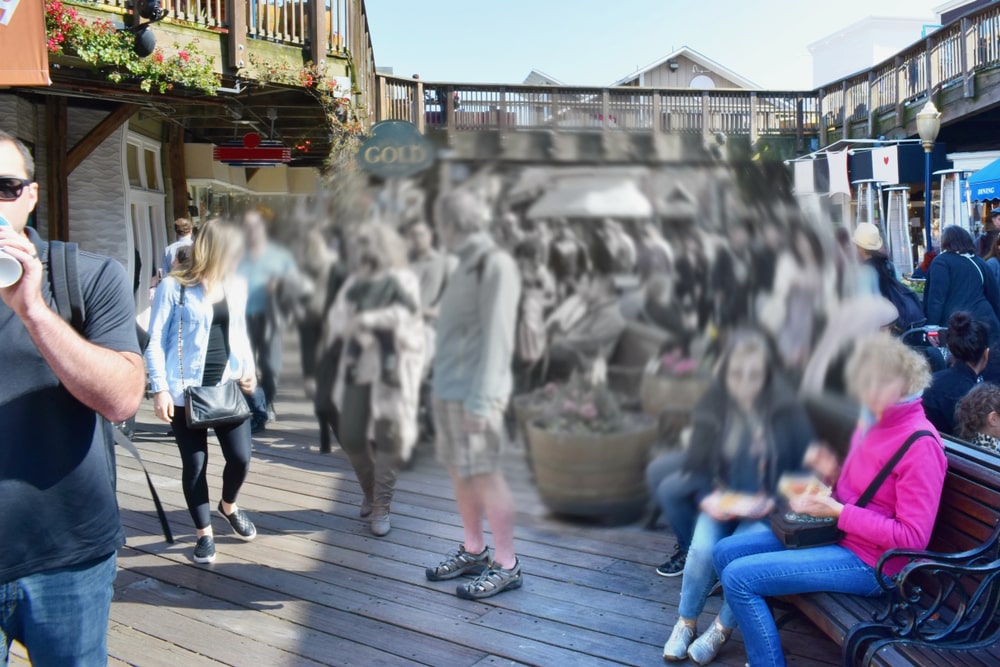Age-Related Macular Degeneration – What Is It?
AMD otherwise known as Age-Related Macular Degeneration is a common eye condition and one of the leading causes of sight loss amongst those over 50. The condition causes damage to the macula which is used for sharp central vision for spotting things directly in front of us. If you’re diagnosed with AMD it doesn’t mean that you’ll lose your sight completely, however it will make everyday tasks extremely difficult without immediate treatment.
There are two types of macular degeneration. Dry AMD is referred to as a slower, more gradual progression of AMD – this means it could take years for any symptoms to show. There are also collections of tiny yellow deposits within the retina called druse.
Whereas wet AMD is when there’s an increase of abnormal blood vessels under the macula, this degeneration develops quicker – potentially weeks or months.

Credit: ADAM
Macular degeneration causes are unknown, although there’s a few things it’s been linked to such as smoking, being overweight and previous family history of AMD.
What Are the Main Symptoms of AMD?
Some symptoms of age-related macular degeneration include:
- blurred/distorted area in your vision
- seeing straight lines as curvy
- things looking smaller than usual
- Seeing objects that weren’t there before

Age-related Macular Degeneration isn’t painful and usually doesn’t change the appearance of your eye, therefore it’s hard to assume one is suffering from it without a detailed OCT scan that we offer in our practices. AMD can sometimes be picked up from a routine eye test even before the patient notices any symptoms – hence why we emphasise the importance of staying on top of your eye health with regular eye examinations!
Treatment for Macular Degeneration
Unfortunately, there isn’t any cure available for age-related macular degeneration, however in certain cases we can recommend the following treatment depending on which type of macular degeneration you were diagnosed with.
Wet AMD – Eye injections which are given directly into the eyes, this is usually done every 1 or 2 months for as long as the problem persists. Patients are given numbing eyedrops prior to the treatment to minimise the discomfort.
There’s also photodynamic therapy (PDT) which is a light treatment that shines a light to the back of the eye. This light destroys abnormal blood vessels that cause wet AMD. This is a treatment that is usually recommended to patients which had poor results from injections. Again, this procedure must be repeated every couple of months.
Dry AMD – Unfortunately there’s no treatments available for dry AMD, however you can reduce the risk of developing this by cutting out smoking, eating a balanced diet and exercising regularly. We can also refer you to a low vision clinic if you’re really struggling with your day to day activities. You’ll receive practical advice and support on how to live with age-related macular degeneration.
If you think you could be at risk from AMD or just want to get your eyes health examined, you can book an appointment for an OCT scan, or a regular examination here. Alternatively, you can contact any of our practices:
Temple Fortune – 020 8209 1231
Finchley – 020 8371 0023
Potters Bar – 017 0766 0808
